Photos by Isabella Verga, (George Washington University), Student Correspondent for CET Florence, Fall 2022
Professors and coordinators always like to remind students to emphasize the study component of their study abroad experience as well as the abroad aspect. After finishing my first month of classes, however, I have found that there is a lot more overlap between these two components than I anticipated. I have had engaging experiences outside of the classroom that have furthered my understanding and learning about the topics I am studying in my courses. Below I am going to highlight some of my favorite experiences that I have had around Florence that have put the pieces of information I am learning in the classroom into a more complete picture.
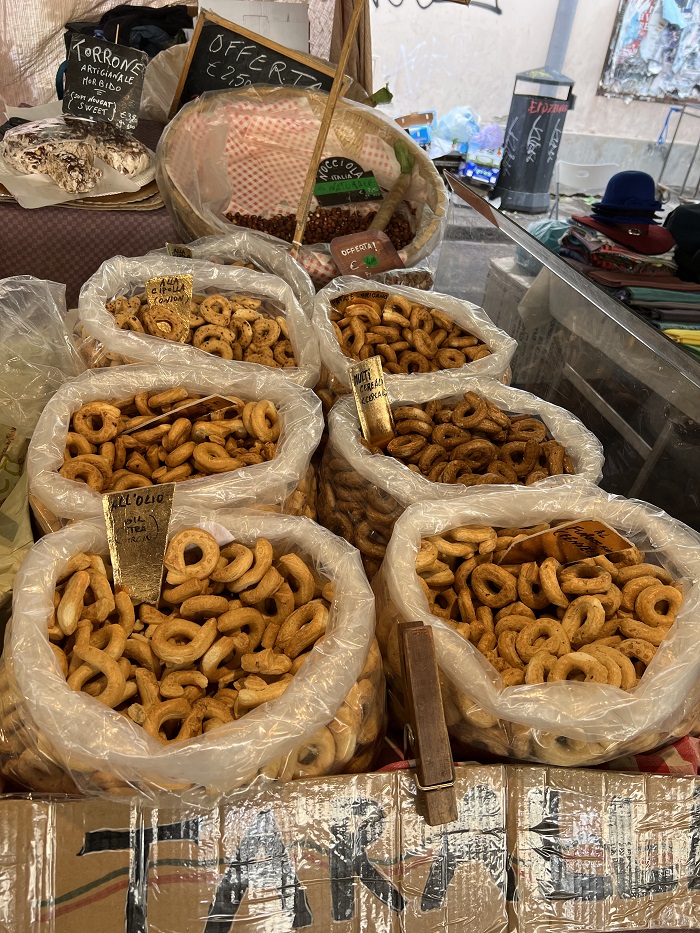
One of my favorite snacks that I have grown up eating at my Italian grandmother’s house is taralli. I was very excited to see a vendor at the Sant’Ambrogio market with fresh taralli in different flavors! I saw the taralli when I visited the market with my Italian class, and I purchased a bag of the taralli alla cipolla.
Food and Culture in Italy
We have a tasting in my Food and Culture in Italy class at least once per week, but one of my favorite tasting experiences thus far has been our visit to a popular street-food stand in the heart of Florence. On our way, my professor stopped every few blocks to share a story or a piece of historical background about various checkpoints in the Santa Croce neighborhood. Even though some of the information did not directly relate to our lesson for the day, it was enlightening to have a Florentine expert like my professor give a personal, mini-tour of the neighborhood.
My favorite stop was a retired “wine window” where residents used to be able to purchase a glass of wine through a small hole in the wall. Our ultimate destination was a “lampredotto” stand which is a traditional street food in Florence where you can get different types of sandwiches made from different parts of the cow stomach (lampredotto, tripe, and centropelle). We each got a small taste of the different cuts of meat, and as we gathered around we saw a local resident taking a break from work to enjoy a leisurely lunch at one of the small stools set up at the stand. Because it was getting towards lunch time, we all looked on, salivating, as the man enjoyed his sandwich.
My professor had explained that street food like these sandwiches were a typical lunch for those who would work at the markets all day in ancient times. It was satisfying to see this tradition still in action even after so many years. Experiences like this have shown me how traditions and history have been consistently passed down within Florence from the cobblestones on the street to the foods that are eaten for lunch.
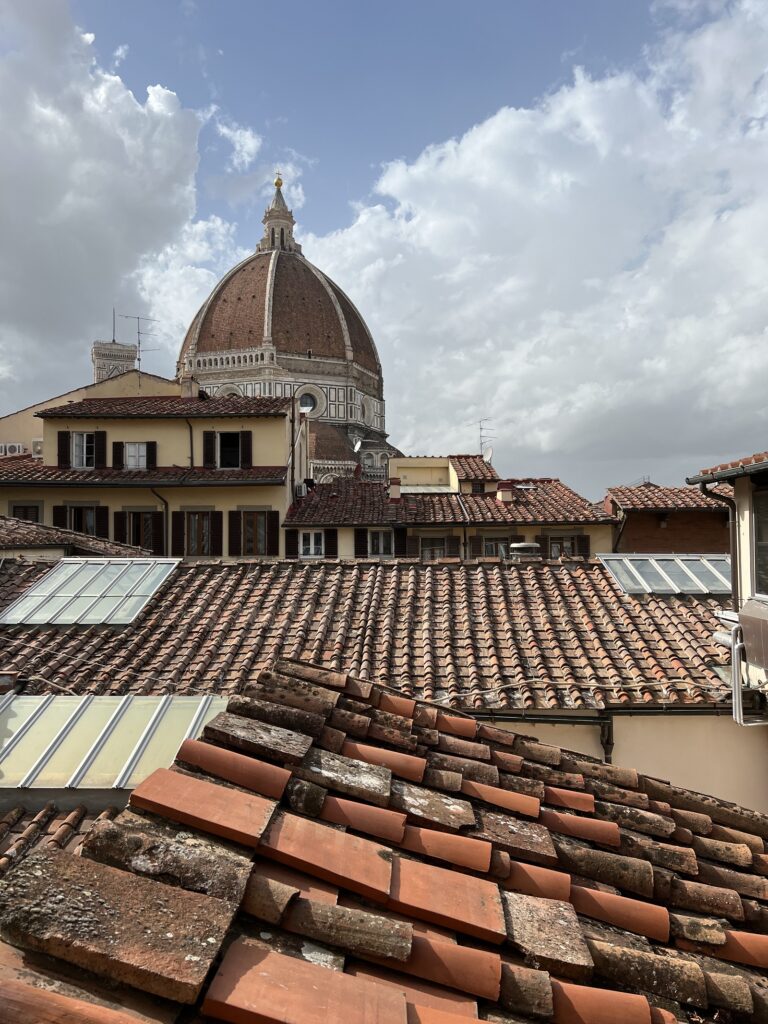
This is the view from my favorite study spot, the Oblate library! I like to sit on the top floor where there is a café and a clear view of the Duomo.
The Medici: History and Legend of an Italian Dynasty
The footprint of the Medici family and the life they lived in Florence can still be seen across the city from the various buildings and works of art they left behind. It has been a privilege to have my professor as a private tour guide of the Medici landmarks in this course. On our visit to the Palazzo Medici, we even had a nearby tourist tag onto the back of our group as we followed my professor around the palace.
One day I had a personal learning experience after class time when I stumbled upon a building that we had talked about in our class earlier that day. My friend and I went for a walk one evening on the hunt for some tiramisu and along the way we passed a church with a blank facade. I paused. We had talked about a church in class that day that famously had no facade: the San Lorenzo church! This church is the parish church of the Medici family, and it was the first church in Florence that was built in about 300. I had yet to venture into this area of the city, and I felt accomplished for recognizing the building I had read about earlier that day. I also had a moment of reflection where I realized how lucky I was to have the landmarks and artifacts I learned about in my classes just a few steps away from where I am living.
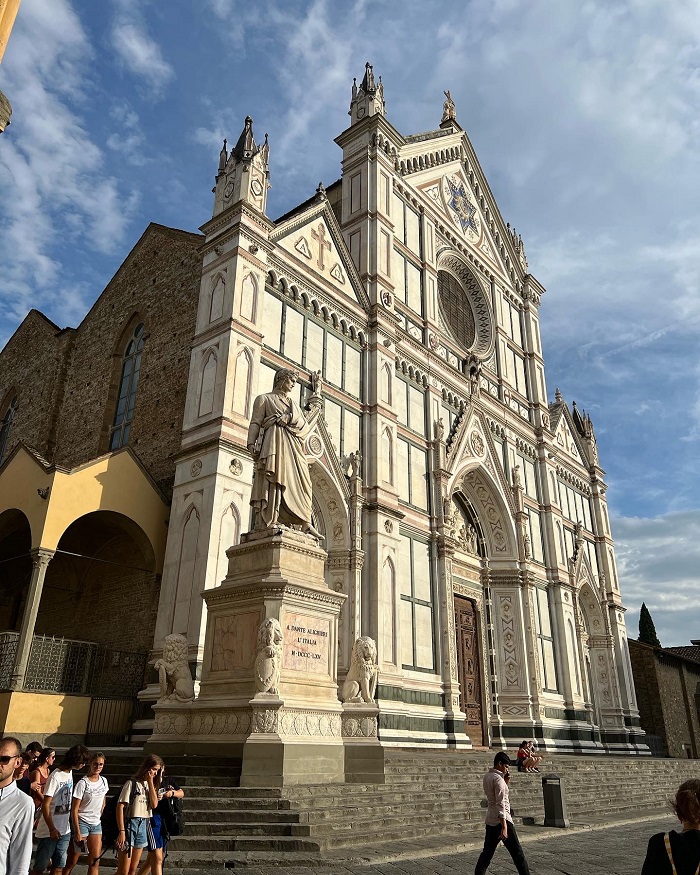
This is the Santa Croce church that is a few blocks away from my apartment. We visited the piazza outside the church during my Intercultural Communications walking tour.
Italian Language
Our out-of-the classroom experience for Italian was more of a challenge then a mere visit. We went to the Sant-Ambrogio market (right behind my apartment) which has a produce market outside as well as butchers, fish sellers, bakeries, and a restaurant. We were tasked with finding fruits, vegetables, cheeses, meats, fish, and pastries and recording the different varieties that we found. This exercise was personally helpful because I had the chance to fully understand what certain foods were that I may not have been familiar with previously (and now can recognize on menus).
Our final goal was to interview a customer about what they bought at the market. This exercise was meant for us to utilize our Italian conversational skills and to learn more about what groceries residents purchase for their meals. Although it was nerve-wrecking to initiate a full conversation (beyond asking where the bathroom is or ordering my gelato), I am glad that I was pushed to practice my Italian because it gave me the confidence to use it more when I am on my own.
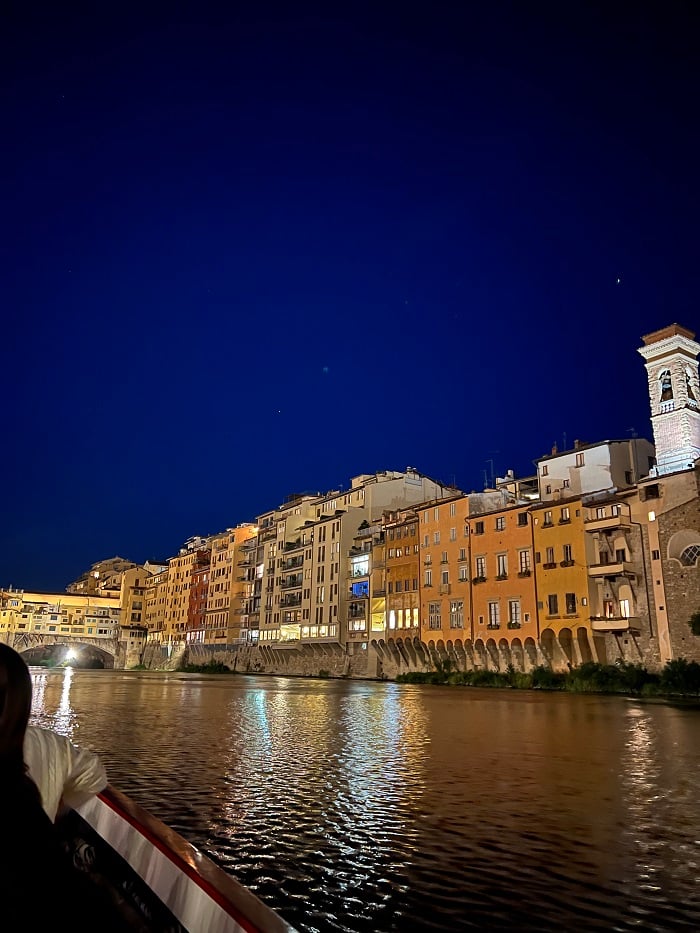
One of my favorite activities that CET has taken us on so far is a boat ride on the Arno River! We went at nighttime, and it was beautiful to see all of the stores and restaurants along the river and the Ponte Vecchio lit up.
Intercultural Communications
The focus of my Intercultural Communications course is to increase our knowledge about Italian culture and how it compares to what we (the students) experience in our own lives outside of Italy. As someone who grew up in Italy, my professor teaches our course by combining theory with his own personal anecdotes as a lifelong resident. Although my professor did not grow up in Florence, he took us on a walking tour of the Santa Croce neighborhood to highlight some buildings that are significant parts of everyday life for Florence residents.
We first stopped in a piazza (Piazza di Santa Croce) which—as my professor explained—is the center point of life and community in Italy. Although the piazza was full of tourists during the time we were there early in the morning, my professor described the typical scenes we could find in a piazza later in the day: children passing a soccer ball around, teenagers sitting on the benches making small talk, or adults having a coffee or glass of wine at the cafes surrounding the piazza. Standing on the cobblestones of the piazza with this detailed imagery from my professor led me to keep a lookout the next time I passed through the piazza in the evening to identify locals and their socializing habits in real life.
Then, we stopped at a nearby school (that is actually on the same street as my apartment) where we could hear children laughing behind the closed doors of the school as my professor outlined a typical school day for Italian children. This “field trip” around the neighborhood that I live in was an enlightening lesson because it has led me to take note of the everyday life in these places that I pass through nearly every day. It is one thing to read or hear about the typical activities of a certain culture but to see it with my own eyes paired with the context and reasoning behind these actions has furthered my understanding of Italian culture much more than I could have imagined.
Overall, my favorite parts of my classes thus far have been when we go out into Florence to have a more visual, immersive experience. Learning about another country whilst living abroad the completes my studies in a way that makes studying abroad an incomparable experience.
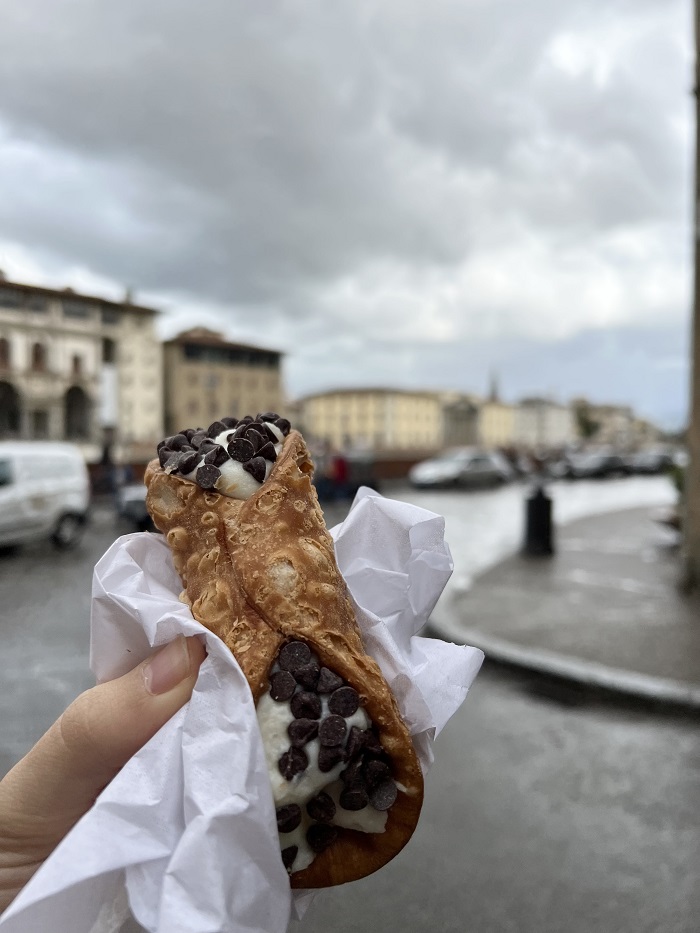
My first cannoli in Florence! I had heard great reviews about Gino’s Bakery in Santo Spirito, and they definitely lived up to my expectations! This hit the spot on a rainy day.